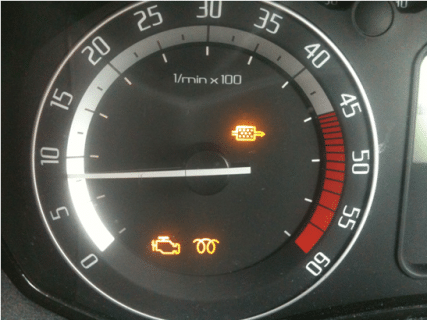DPF (Diesel Particulate Filters) Technology
Changes to new car emissions legislation in 2009 known as ‘Euro 5’ standards, has made diesel particulate filters (DPF) a commonplace in diesel car exhaust systems as catalytic converters are on petrol cars.
The goal is an 80% reduction in diesel particulate (soot) emissions but the technology’s is not without problems – We are already dealing with cars where the particulate filter warning light is illuminated (indicates a partial blockage).
It’s clear that changes to driving style may be required too for maximum benefit from these systems.
How do they work?
Diesel Particulate filters (DPF) or ‘traps’ do just that, they catch particles of soot in the exhaust system.
As with any filter (think of the bag in your vacuum cleaner) they have to be emptied regularly to maintain performance. For a DPF this process is called ‘regeneration’ – the accumulated soot is burnt off at high temperature to leave only a tiny ash residue. Regeneration may be either passive or active.
Passive regeneration
Passive regeneration takes place automatically with motorway-type driving when the exhaust temperature is high. Many cars don’t get this sort of use though so manufacturers have to design-in ‘active’ regeneration where the engine management computer (ECU) takes control of the process.
Active regeneration

When the soot loading in the filter reaches a set limit (about 45%) the ECU can make small adjustments to the fuel injection timing to increase the exhaust temperature and initiate regeneration. If the journey’s a bit stop/start the regeneration may not be completed and the warning light will illuminate to show that the DPF is partially blocked.
It should be possible to start a complete regeneration and clear the warning light simply by driving for 10 minutes or so at speeds greater than 40mph.
Please refer to your owner’s manual for guidance on how to help the car perform a ‘regeneration’ of the DPF.
We also sell a fuel additive which can help reduce the soot build up by simply adding it to your tank from time to time.
If you ignore the light and keep driving in relatively slow, stop/start pattern soot loading will continue to build up until around 75% when you can expect to see other dashboard warning lights illuminate too and power will be reduced. At this point driving at speed alone will not be sufficient and the car will have to go to a specialist for regeneration.
Expensive repairs
if warnings are still ignored and soot loading continues to increase then the most likely outcome will be a new DPF costing over £1000.
Mainly town based driving?
if your own car is used mainly for town-based or stop/start driving it would be wise to choose petrol rather than risk the hassle of incomplete DPF regeneration
Should you have any further questions regarding the DPF on your Vehicle, please contact your Ricci Concept on 01482 322446

